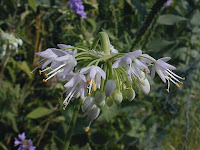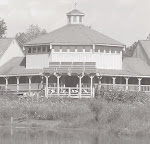 |
Espalier trellis is one technique shown on deepgreenpermaculture.com I sniffed my first whiff of fall today and, I have to admit, it sent me into a bit of hibernation mode. Instead of weeding my garden, I'm fighting back the urge to stock my pantry to the hilt with gourds and apples. The great thing about this time of year is its perfect timing for tree planting and prairie seed sowing. Odd combination you say? Not in the world of permaculture and biodynamic growing. Even land the size of a suburban lot has micro-systems. Little hills, valleys, wind, sun and moisture interacts on a small scale similar to how they interact on a mountain-size scale. Permaculture is a way to use these differences to your advantage. There are production benefits to letting areas mid-crop be wild areas for birds, bees and windbreaks. Even if you don't permaculture your entire property, be sure to check out companion planting. Throughout history growers discovered certain plants play nicer with some than others. Apple trees hate grass. I can't tell you why chemically, but every book on the subject says they do. So cover the grass with newspaper for a chemical free clearing and plant chives, onion, or nodding onion to keep pests away or sow red clover to fix nitrogen and add an aesthetic quality to the planting. An additional bonus is ease of lawn moving and eliminating hazards of trimming near a delicate trunk. I attended a biodynamic workshop at Michael Fields Institute in Spring. Biodynamic principles vary from permaculture, but both are founded on strong ecologically responsible basis. Many permaculture gardens have aspects of biodynamic design and vice versa. Unique to biodynamic is "preparations" or concentrations of composed plants used to give minerals, vitamins, etc to a crop. Tree trunks are considered an extension of the root with the leaves and fruit being the plant itself. This means that the trunk needs to be fertilized just as the roots are. And so came the invention of manure paint. Manure spread on fields by farmers provides nutrients to the soil. Manure painted on a tree gives nutrients the same way. The ladies of BackyardBiodynamics show how to make Biodynamic Tree Paste (a nicer way of saying Manure paint). The recipe is given in the video as well, but is -2 parts silica sand -3 parts potting clay -4 parts cow manure (fresh and organic being best but bagged organic will work in a pinch). Add enough water to make it the consistency of mortar or cake-batter, which ever analogy best fits your lifestyle. |
Enjoy and happy stirring!
The Insider








No comments:
Post a Comment